Are you an avid gardener or someone who just loves spending time outdoors? Are you dealing with a puzzling predicament – brown balls in the soil of your garden and potted plants? You may have noticed this strange phenomenon recently, but don’t worry – it is perfectly normal. Let’s take a look at what these mysterious clumps could be and the best course of action for taking care of them.
What Are Fungus Gnats?
Small flying insects called fungus gnats lay their eggs in the soil of potted plants and gardens. The larvae feed on decaying plant matter and fungi, while the adults feed on nectar and pollen from flowers or other sources of sweet liquid. They have long antennae and translucent wings, making them easily distinguishable from other types of pests. Fungus gnats can quickly multiply in large numbers when conditions are right, leading to a heavy infestation in your garden or home.
Fungus Gnats or Fruit Flies?
The presence of small brown balls in your garden soil may indicate the existence of fungus gnat or fruit fly larvae. The fungus gnats have a grayish-black color and their young ones consume both decaying organic matter and plant roots. Fruit flies are more common and have red eyes and tan bodies with black stripes. Their larvae feed on rotting fruits and vegetables. [1]
If you suspect fruit flies, try sealing off any areas where they may be entering the soil and look for sources of food that could be attracting them. Remove any rotting fruits or vegetables from your garden and keep compost bins covered so that the flies can’t get in.

Will Fungus Gnats Kill Plants?
Fungus gnats are tiny winged bugs that inhabit wet and humid soil. They feed on fungi, bacteria and decaying organic matter, but can also damage plant roots if populations become too large. Fungus gnats do not necessarily kill plants, but they can interfere with the plant’s ability to absorb nutrients from the soil. This could cause stunted growth or even death if left unchecked. Fortunately, there are a few steps you can take to control fungus gnat populations around your plants.
Causes of Brown Balls in Soil
Brown balls in soil can be caused by a number of different factors, including pests, diseases, and environmental conditions. Common pests that cause brown balls in soil are certain species of beetles and mites. These insects feed on the roots of plants, causing them to die off or become stunted and produce brown balls instead of healthy green growth.
Diseases such as fungal diseases and root rot may also contribute to the production of brown balls in soil.
Environmental conditions such as too much water or too little water can both lead to the formation of brown balls in soil due to inadequate nourishment for the plant roots. [2]
Improper fertilization and pH levels can also cause brown balls in soil.
If the soil is too compacted, it can also lead to brown balls in soil as air and water are unable to penetrate the hardened earth.
Finally, brown balls may be caused by chemical burn from too much fertilizer or herbicide, or it could be a sign of nutrient deficiency in the soil.
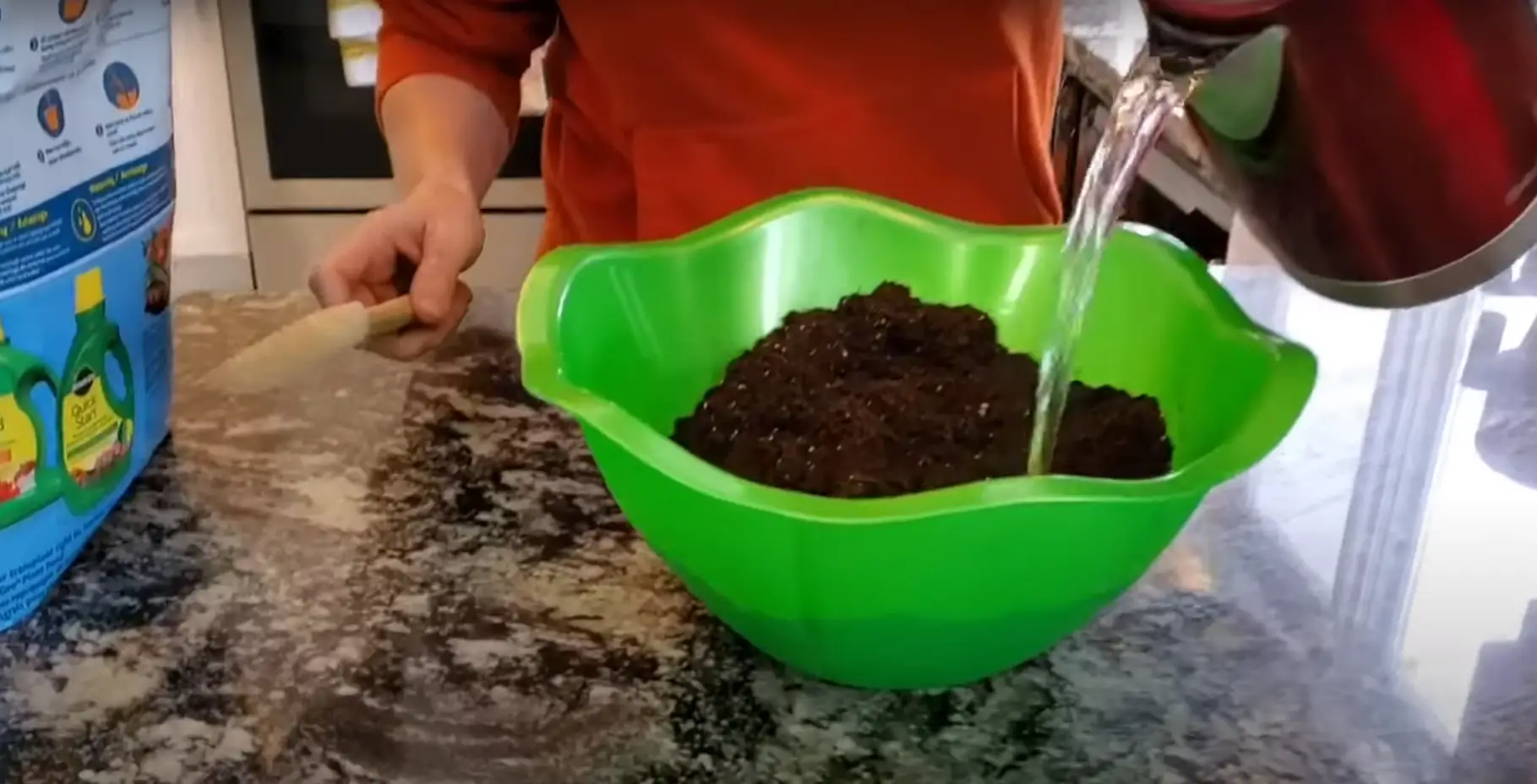
How To Get Rid Of Fungus Gnats In Houseplants Soil
1. Control soil moisture
To reduce the number of fungus gnats, it can be helpful to remove standing water and avoid keeping your plants in wet soil for extended periods since fungus gnats require moist soil to survive and reproduce.
2. Water plants from the bottom
If you spot brown balls in the soil, this could be a sign of overwatering. To prevent root rot and other diseases caused by too much water, water your plants from the bottom instead of from the top. You can do this by submerging the pot in a sink or bowl filled with an inch or two of lukewarm water for 10-15 minutes. Be sure to empty any extra water afterward so that your plant doesn’t sit in standing water, as this can lead to even more issues!
3. Use yellow houseplant sticky stakes
You can effectively keep track of your plant soil’s moisture levels by utilizing yellow houseplant sticky stakes. These sticks are placed into the soil and will turn brown or black when the soil is too dry, and stay yellow if there is enough moisture. This can help you determine if it’s time to water your plants so you don’t overwater them!
4. Apply organic pest control products
You can find natural and organic pest control products online or in garden centers that could help you reduce the number of brown bugs in your soil. Be sure to read the product’s label and follow all safety instructions before use. Sprinkle diatomaceous earth around the soil surface to create an insect-repelling barrier or apply beneficial nematodes to feed on the larvae of pests that live in the soil. Use caution when applying these products – some can be toxic if not used correctly! Finally, avoid using chemical insecticides and fertilizers as they can actually increase populations of brown balls over time. [3]
5. Remove the gnat infested soil
If you have a large infestation of brown balls, it may be necessary to remove the soil and replace it with fresh soil. Carefully sift through the top layer of the soil and discard any brown balls you find. Scrape away any surface mold and wash off remaining dirt before disposing of it in an appropriate manner. Once the old soil has been removed, fill the area with new potting soil or garden soil that doesn’t contain any brown balls.
6. Use soil covers
Using soil covers is an effective way of preventing brown balls from appearing in your soil. A thin layer of plastic sheeting, black cloth or newspaper laid down over the topsoil can help to prevent these pests from being able to reach the upper layers where they cause damage. You may also use a soaker hose under the cover material to ensure that water still infiltrates the soil and gets to plant roots. Finally, you should make sure that all air holes are covered with mesh or another covering so that any air circulation is blocked off completely. This will create an environment unfavorable for brown balls and other potential pests from entering your soil.
7. Store unused potting soil in a sealed container
Even if you are not actively using potting soil, it is important to store it in a sealed container in order to prevent any pests from entering the soil. Brown balls can easily enter through even the smallest of openings and cause damage to your plants, so be sure to always seal up your unused potting soil tightly. This will limit their access and give your plants a better chance of surviving without being affected by these pests.
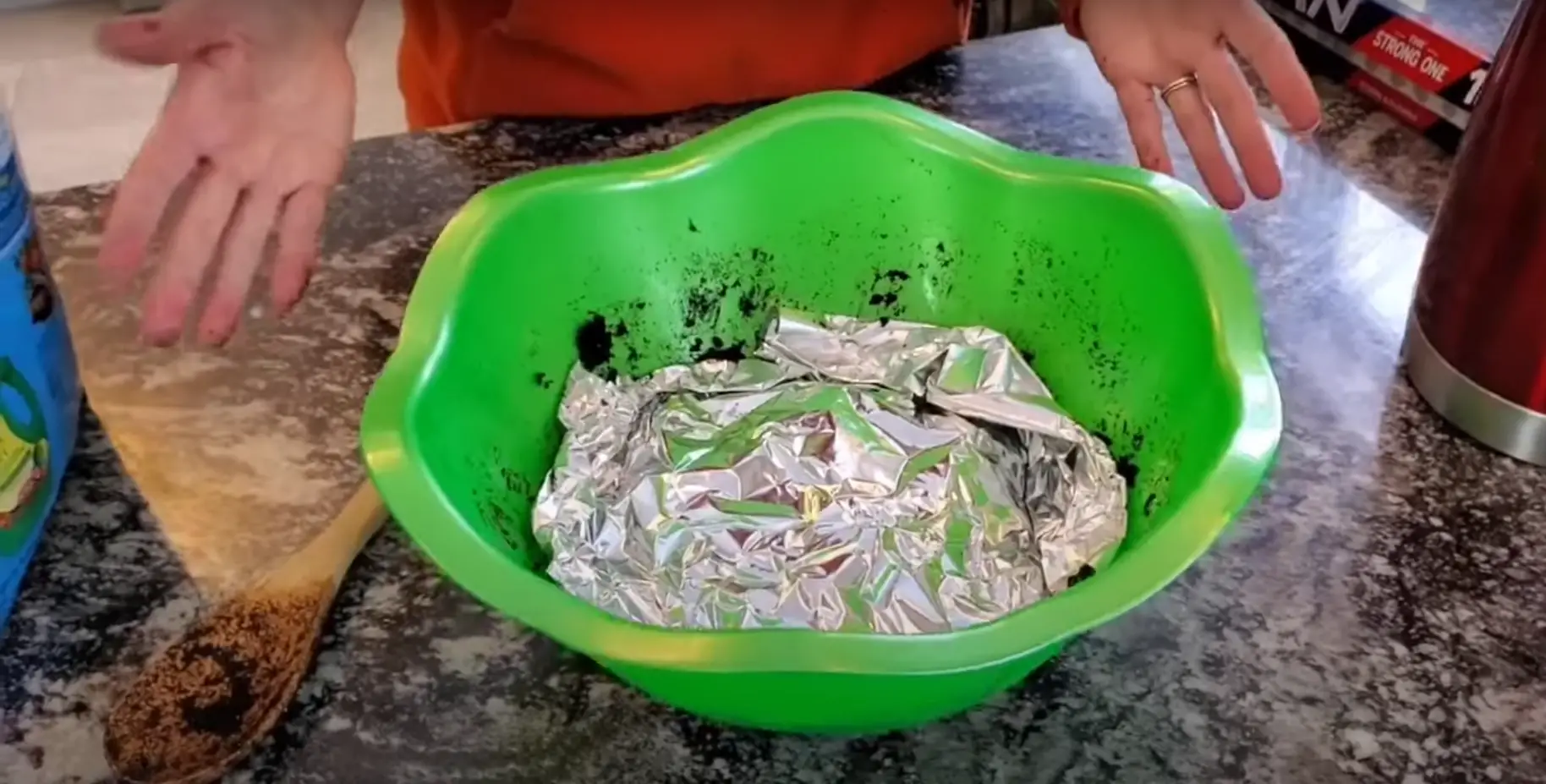
8. Never reuse potting soil
Reusing potting soil is never a good idea, as it can contain pests such as brown balls and other insects that could potentially damage your plants. If you need more potting soil, it’s best to invest in some fresh new stuff instead of using up the old one. This will ensure that your plants are getting the best possible protection from any potential pest invasions. [4]
Types Of Brown Fungus In Soil
There are several types of brown fungus commonly found in soil. Depending on the type, there are different ways to treat it. The two most common types of brown fungus in soil are Rhizoctonia and Sclerotinia fungi.
Sclerotinia is lighter in color and often appears as an orange or yellowish discoloration on the soil surface. It can cause root rot in plants if it is not taken care of. The best way to manage this type of fungus is to keep your soil well-drained and apply a fungicide containing chlorothalonil or mancozeb. These fungicides will help prevent the spread of Sclerotinia spores and will also control other plant diseases that may be present in the soil.
In addition, make sure that you are providing your plants with adequate nutrition so they can fight off any existing fungal infections and remain strong and healthy. If you have identified brown balls in your soil as being caused by one of these fungi, contact a local garden center or landscaping company for more advice on how to treat them properly.
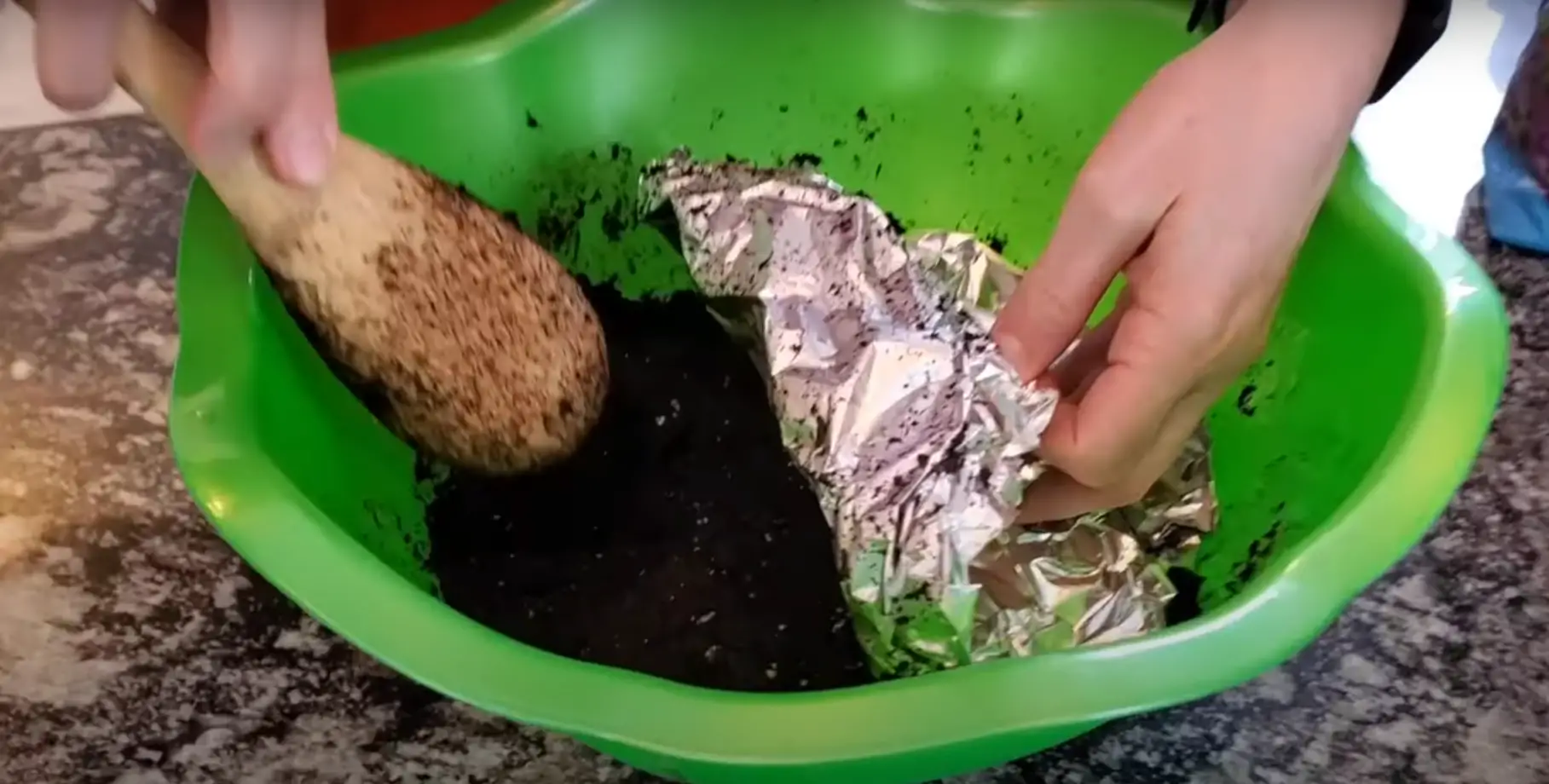
Pest Control Methods For Controlling Brown Fungi In Soil
Brown balls in soil are caused by a variety of fungi, the most common being Rhizoctonia solani and Pythium ultimum. These fungi can cause serious damage to crops and gardens so it’s important to take steps towards controlling them.
One way to control brown fungi in soil is by applying an approved fungicide. Fungicides help control the spread of the fungus by killing existing spores or preventing new ones from forming.
Another effective method for controlling brown fungi in soil is cultural management. This includes practices like improving drainage, removing infected plants, and preventing over-watering of the soil. In addition, you can use beneficial bacteria or nematodes to help suppress the fungus. You can find these at your local garden center and follow instructions on how to apply them.
The best way to prevent further spread of brown fungi in soil is with good sanitation practices such as disposing of infected plant material away from other plants and regularly cleaning tools used for gardening.
By following these steps, you can effectively control any existing brown fungi in your soil and help prevent new ones from forming. With diligence and regular monitoring, your garden or crop will be free from any fungal problems. [5]
Does Brown Fungus Grow On Mulch?
Yes, brown fungus can grow on mulch. This is due to the presence of fungi spores in the air, which settle into mulch and begin to propagate. The most common type of brown fungus found in mulch is known as Rhizoctonia solani, or “brown patch”. Brown patch causes circular patches of dead grass with tan centers that spread outwards from the original point of infection. It’s important to note that brown patch can also spread from existing infested areas onto healthy areas via wind-borne spores; consequently, it can be difficult to contain outbreaks even if they are initially confined to a small area.

General Tips on Treating Soil
- Before treating soil for brown balls, it is important to identify the source of the problem. This could be a fungus, insects or a combination of both. Once identified, appropriate treatment can be determined.
- If the cause is due to fungal growth in the soil, use a fungicide labeled specifically for your type of plant and follow all instructions carefully. Treating with fungicides on a regular basis may also help prevent recurrence.
- If insects are causing the brown balls, control them by applying an insecticidal soap or an insecticide containing neem oil according to label directions.
- A thick organic mulch applied over topsoil can reduce weed pressure and keep down disease organisms that may contribute to the problem.
- If the brown balls are due to a combination of fungal and insect activity, consider using both fungicides and insecticides as needed. Be sure to read and follow all label directions.
- Finally, regular monitoring is essential in order to detect any further problems with brown balls in soil early on so they can be controlled before they become more serious.
By maintaining healthy soil conditions, you can help prevent the recurrence of these issues. [6]
Can Fungus Survive In Dry Soil?
Yes, fungus can survive in dry soil. Fungus is a type of organism that exists as spores and uses its surrounding environment to obtain the moisture it needs for survival. These spores are able to live in temperatures ranging from freezing cold to hot and humid climates. In addition, they are capable of surviving drought and extremely dry conditions by entering an inactive state until suitable moisture levels return. As such, while fungus may not thrive in dry soil, it can still survive for extended periods without water.
It is important to note that different types of fungi have various needs when it comes to growing in soil based on factors such as temperature, moisture level, acidity, and nutrient availability among other things. Therefore, if you notice brown balls forming in your soil, it is important to identify the type of fungus present and make any necessary adjustments before attempting any form of treatment.
Is Baking Soda a Fungicide?
When it comes to brown balls in your soil, baking soda might be a good solution if you think they are caused by fungus. Baking soda is an effective fungicide and can help to get rid of the brown spots in your soil. To use baking soda as a fungicide, mix one tablespoon of baking soda with four tablespoons of water. Then pour this mixture over the affected area and leave it for several hours before rinsing off with water. This should help to reduce the number of brown balls present in your soil.
Overall, baking soda can be an effective solution for brown balls in your soil but should not be seen as a complete cure-all. It’s still important to take other measures such as removing the affected soil or using additional fungicides to ensure that all of the fungus is eliminated from your garden bed. With careful use and appropriate precautions, however, baking soda may help reduce the number of brown balls present and help you keep your garden thriving!
FAQ
What are the little brown balls in my soil?
These little brown balls are most likely root nodules, which can contain nitrogen-fixing bacteria. The bacteria convert nitrogen from the air into a form of nitrogen that plants can use. This process is essential for plant growth and development.
What benefits do root nodules provide?
Root nodules provide a number of important benefits to plants, including providing plants with an extra source of nitrogen, which can help to promote healthy and vigorous growth. Additionally, root nodules can also help to increase the fertility of the soil by improving its aeration and nutrient availability.
Should I remove the brown balls in my soil?
No, there is no need to remove the brown balls from your soil. In fact, it is best to leave them in place as they are providing essential nutrients for your plants. However, if you notice that the number of root nodules in your soil has increased significantly, it may be a sign that your soil is becoming overly saturated with nitrogen. If this is the case, you should consider adding other sources of fertilizer or adjusting your watering habits.
What else can I do to help my soil?
There are several things you can do to improve the overall health of your soil. First, make sure that you are regularly adding organic material such as compost or mulch. Additionally, it is important to test the pH levels in your soil on a regular basis and adjust them accordingly. Finally, ensure that you are providing adequate drainage for your plants so they don’t become waterlogged.
Are clay balls good for plants?
Clay balls can be beneficial to plants, depending on the soil type and the amount of clay present. Clay balls provide a good structure for water retention and aeration in soils, which is important for healthy growth. They also contain essential minerals that can help feed the plant. However, too much clay content can lead to poor drainage and make it difficult for roots to penetrate the soil.
Is soil fungus harmful?
Soil fungus is not necessarily harmful, as it can help to break down matter such as dead leaves and organic material. Fungal activity also helps to improve soil fertility by releasing nutrients into the soil. However, if there is a large amount of fungal growth present in the soil, it could lead to plant diseases or negatively affect their growth. It is important to check for signs of fungal presence in your garden and act accordingly if needed.
Useful Video: How to CLEAN your soil BEFORE planting seeds | Kill Fungus Gnat Larvae
Conclusion
In conclusion, brown balls in soil can be a sign of various issues. To ensure that your garden or lawn is healthy and thriving, it’s important to identify the cause of the brown balls and take appropriate action. If you think that your soil is infested with nematodes or grubs, then it’s best to introduce pest-specific treatments into your garden. You can also choose natural methods such as introducing beneficial nematodes or planting companion plants to help keep pests away. Finally, if the cause remains unknown, some general improvements may help improve the health of your soil such as adding organic matter, aerating the soil, and improving drainage. Taking these steps will help make sure that your garden stays healthy for many years to come.
If you have any further questions or concerns about brown balls in soil, it is always best to consult a professional for individualized advice and help. They can provide valuable insight into your particular situation and guide you towards the right solution. With the proper care, your garden should be free of brown balls in no time!
References:
- https://gardenguider.com/brown-balls-in-soil/
- https://flourishingplants.com/brown-fungus-on-soil/
- https://getbusygardening.com/control-soil-gnats/
- https://www.rd.com/article/white-fungus-balls-in-soil/
- https://extension.umn.edu/lawn-care/common-fungi
- https://terraforums.com/forums/threads/strange-brown-balls-in-soil.140502/





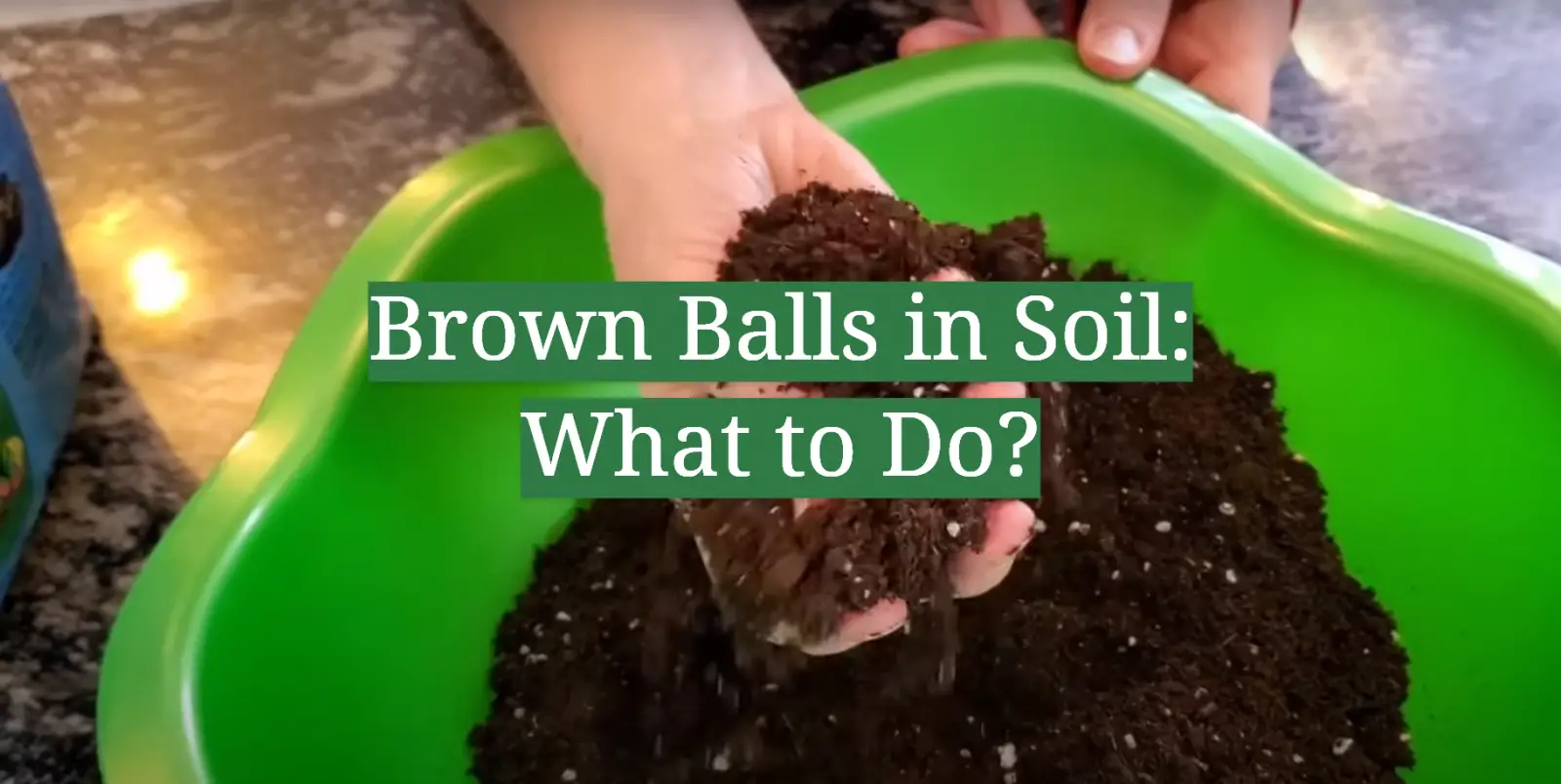
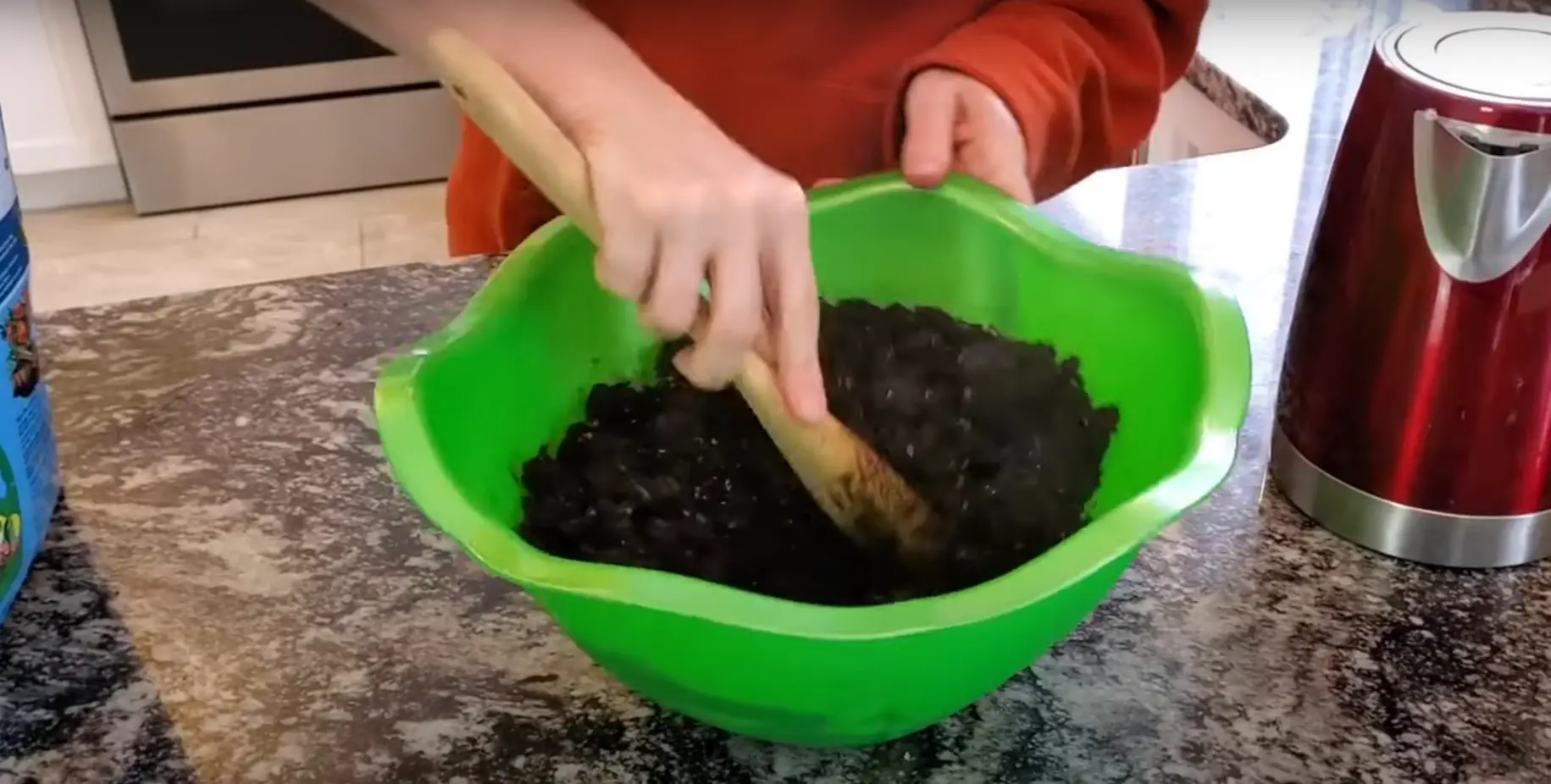


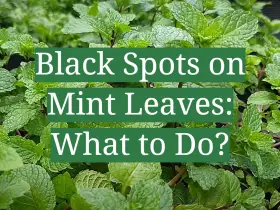
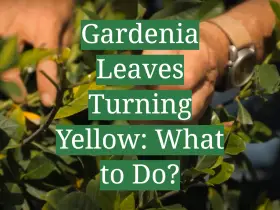
Leave a Reply
View Comments